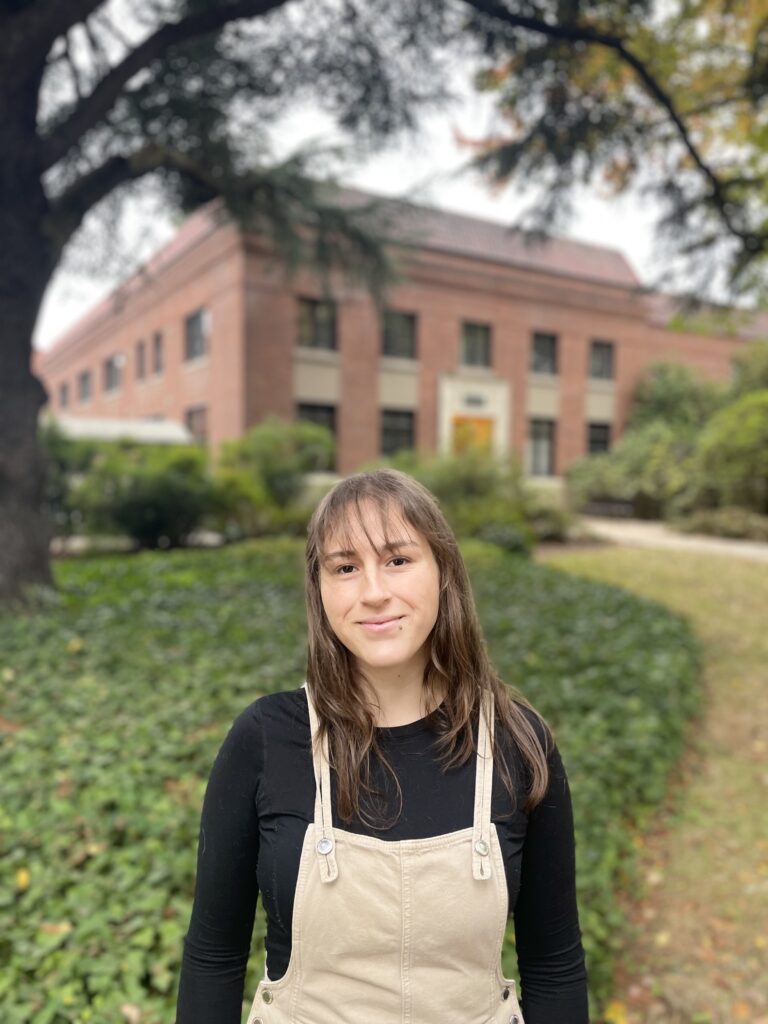Maria Jose Iglesias-Thome, M.S. Student, Water Resources Science

My passion for water started at a very young age. When I look back at my childhood, the things that interested me growing up, and where I stand today, I can’t help but think that this trajectory makes sense. When my thesis advisors gave me the chance to propose a research project, I jumped at the opportunity to study groundwater in my hometown.
I grew up in Puerto Morelos, Mexico, a small coastal town situated a few yards from the Caribbean ocean, nestled between vine-covered sand dunes and dense marshy mangrove forests and sitting on top of an ancient underground network of “rivers”. For locals, the idea that underneath lies a hyper-connected and inherently sensitive groundwater system, is part of the traditional knowledge passed on through generations. As the region continues to grow and develop, the abstract ideas of how the local aquifer flows, are replaced with an erroneous notion that clean water will always be accessible and will never cease to exist.
The place: Complexity hidden beneath our feet

The whole Yucatan peninsula sits on a flat limestone platform, built on top of millenia of fossilized calcified skeletons from creatures past. The carbonate rock that was left behind is highly soluble and vulnerable to rainwater dissolution. Throughout the years, heavy rainfall, common in this tropical environment, has carved a series of conduits, revealing a contiguous coastal aquifer and a landscape virtually devoid of rivers and non-groundwater dependent surface water systems. This process is known as karstification and the topography it leaves behind is known as karst. Scattered across the Yucatan peninsula are larger dissolution conduits: caves and sinkholes that have collapsed to form what are locally referred to as cenotes, derived from the Mayan ts’onot, that give us a direct look into the aquifer. Other important hydrogeologic features include major faults systems and regional-scale flow patterns from the center towards the marginal ends of the Peninsula, the coast. Inside these coastal karst aquifers, a thin freshwater lens (5-7 meters deep) lays atop an intruding saltwater layer, known as the “cuña salada”, penetrating 10-15 meters into the subsurface. This shallow layer provides most of the water for an increasingly growing population across the entire peninsula.
The problem: Chaotic population sprawl
The complexity of this groundwater system results in an inherently vulnerable resource, especially to anthropogenic sources of disturbance. Likewise, it is unclear how patterns of water use may be depleting groundwater quantity and/or degrading groundwater quality and how these changes are affecting water availability to local communities and ecosystems in the region. Extreme urbanization and population growth may be a large driver of water insecurity and scarcity. In 2017, the state of Quintana Roo hosted over 17 million tourists and sustained an average hotel occupancy of around 83%. The number of tourists visiting Quintana Roo has more than doubled in the last 10 years, with a 120% increase in yearly tourists between 2009 and 2019. Similarly, the population in the area has grown around 40% over the past 10 years. Spatially, development in the region follows an overall gradient from north to south, while the population is currently concentrated in northern communities, southern communities are experiencing higher rates of population growth. In other words, development is quickly spreading south.
As urbanization continues to sprawl across the coastline, concerns about saltwater intrusion, deep-aquifer contamination through wastewater injection, and shallow-aquifer contamination through septic tank leaks and fertilizer application continue to grow.
Understanding the relationships between social and ecological systems through their shared reliance on groundwater resources is important for evaluating water security and subsequent water scarcity issues. It may also prove critical in examining how coastal communities that rely on water for their livelihoods may be disproportionately affected by ongoing changes in water resources in the region.

The methods: Mixed methodology and an evolving plan
Mixed research methods are useful tools in studying complex social-ecological system problems, like those in Quintana Roo. Qualitative interviews are a central component of my research methodology. This summer I had the privilege of conducting semi-structured interviews with large and small water users, water managers and water protectors. Interviewees included hotel representatives, domestic users, NGO and civil society leaders, and local government officials. My interviews covered a variety of topics and were rooted in concepts related to water scarcity, resilience theory and social-ecological systems frameworks. The data collected with these interviews will allow me to understand important exposure to water scarcity and other hazards, social vulnerabilities and sensitivities that affect how individuals and groups respond to water stress and aid in evaluating adaptive capacity from varying degrees of scale. Synthesizing important hydrogeological knowledge as well as the data collected through interviews, will allow for a holistic approach to understanding and measuring water scarcity through an integrated assessment model-framework (IAMF). The model aims to integrate biophysical aspects of water scarcity, such as seasonality, water source, quantity and quality, with socioeconomic aspects of water scarcity, such as accessibility, reliability and social vulnerability. It also hopes to include nuances that are often overlooked in water security models and water scarcity assessments.
It is fascinating to research a place and a problem that are so dynamic and often evolving. One of the reasons why I am so deeply interested in natural resource management and specifically water resource science is because I grew up seeing the landscape around me change. I feel infinitely privileged to be working in a place I love and know, and hope to continue to contribute to what is known about it.

